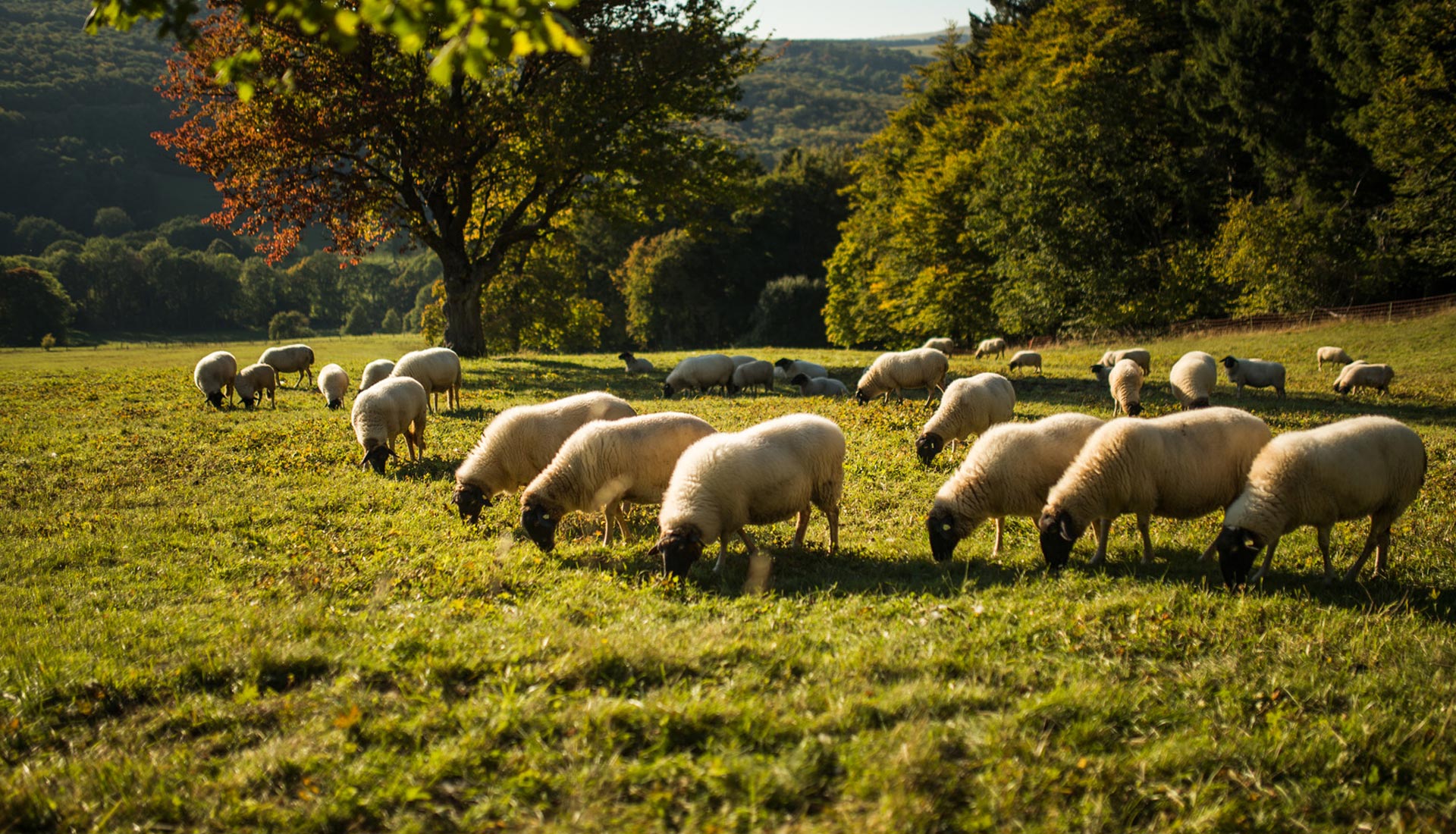

Light-footed custodians of the land
 © Hessen Agentur_Paavo Blåfield
© Hessen Agentur_Paavo Blåfield

 © Hessen Agentur_Paavo Blåfield
© Hessen Agentur_Paavo Blåfield © Hessen Agentur_Paavo Blåfield
© Hessen Agentur_Paavo Blåfield
Olaf is a proper Bavarian and weighs an impressive 100 kilos. He pulls on his rope restlessly. The ram has caught a scent that promises a lot of work for him: a herd of sheep. Julia Djabalameli needs a new generation of sheep, and so she has brought in Olaf, who belongs to a shepherd friend of hers from the Bavarian part of the Rhön. She has around 40 sheep and 35 lambs but does not own a breeding ram. She wanted to make sure she didn’t have to settle for second best: “I wanted to get a ram from a shepherd who treats his animals as well as I do”, she says. She finds it important that her animals have a stress-free life and are very trusting as a result. “I’m always welcoming visitors to my farm in Ehrenberg and the children love to stroke the soft woolly coats of the sheep.” She shears her sheep twice a year. It might be more work, but it makes sure her sheep don’t get too hot and keeps their coats clean. Rhön sheep are sturdy animals. And they need to be to cope with the mountain climate. They can be distinguished by their narrow, black heads which stand in stark contrast to their white bodies. Their legs are bare and their hoofs hard so that they can move nimbly through the rough terrain. The breed is said to have its origins back in the 16th century, making Rhön sheep one of the oldest German breeds. “The Rhön sheep has become the symbol of our region”, says Djabalameli. “It’s an example of how farming, nature conservation and traditional life can all be combined, especially in the cultural landscape of the Rhön. It’s also the reason why the region was declared a UNESCO Biosphere Reserve”, explains Djabalameli. The Hessian Rhön has also been crowned a model eco region to promote ecological farming methods and increase the range of regional organic products available to locals and guests.
 © Hessen Agentur_Paavo Blåfield
© Hessen Agentur_Paavo Blåfield
Sheep have become a key fixture in the Rhön. It’s is hard to believe they were on the verge of extinction just forty years ago. “Rhön sheep were a major export product in the 19th century: Napoleon took them to France and they enjoyed great popularity thanks to their flavoursome meat. But the Rhön sheep isn’t a profitable breed and soon lost its importance in the 20th century. By the 1970s, there were only a few hundred left”, explains Djabalameli. Today there are once again over 4,000 animals, but we’re not in the all-clear yet. “We can’t afford to let up in our efforts”, warns Djabalameli. She sees potential in the catering trade: “If we can make Rhön lamb fixture regular dish in restaurants serving regional cuisine, we’ll have achieved a lot”. She is trying to establish a company selling refined products like ham and salami. The meat from extensively farmed sheep is extremely tender and flavoursome, as the animals have more time to grow. Rhön sheep are generally not farmed for their milk and cheese, as they need to produce enough milk for their lambs.
 © Hessen Agentur_Paavo Blåfield
© Hessen Agentur_Paavo Blåfield
Djabalameli sees Rhön shepherds and their animals as custodians of the land. By allowing them to graze at higher altitudes within the Rhön on otherwise unused land, they help to prevent areas becoming overgrown and contribute to the conservation of the cultural landscape. The Rhön spans Hessen, Bavaria and Thuringia and represents a mosaic of forested and open spaces, mountains, floral meadows and moorland, with small settlements dotted around the landscape. The diverse natural space has a relatively low number of human inhabitants, providing good conditions for endangered animals like wild cats, black grouse, black stork and kingfishers. An environment suitable for wild animals is also perfect for Julia Djabalameli’s Rhön sheep. When she goes to do her evening check on her lambs, she finds they’ve escaped again. It seems the grass in the neighbouring meadow orchard tastes better than the grass they’re supposed to eat!
The Taunus
The Westerwald
The Lahn Valley